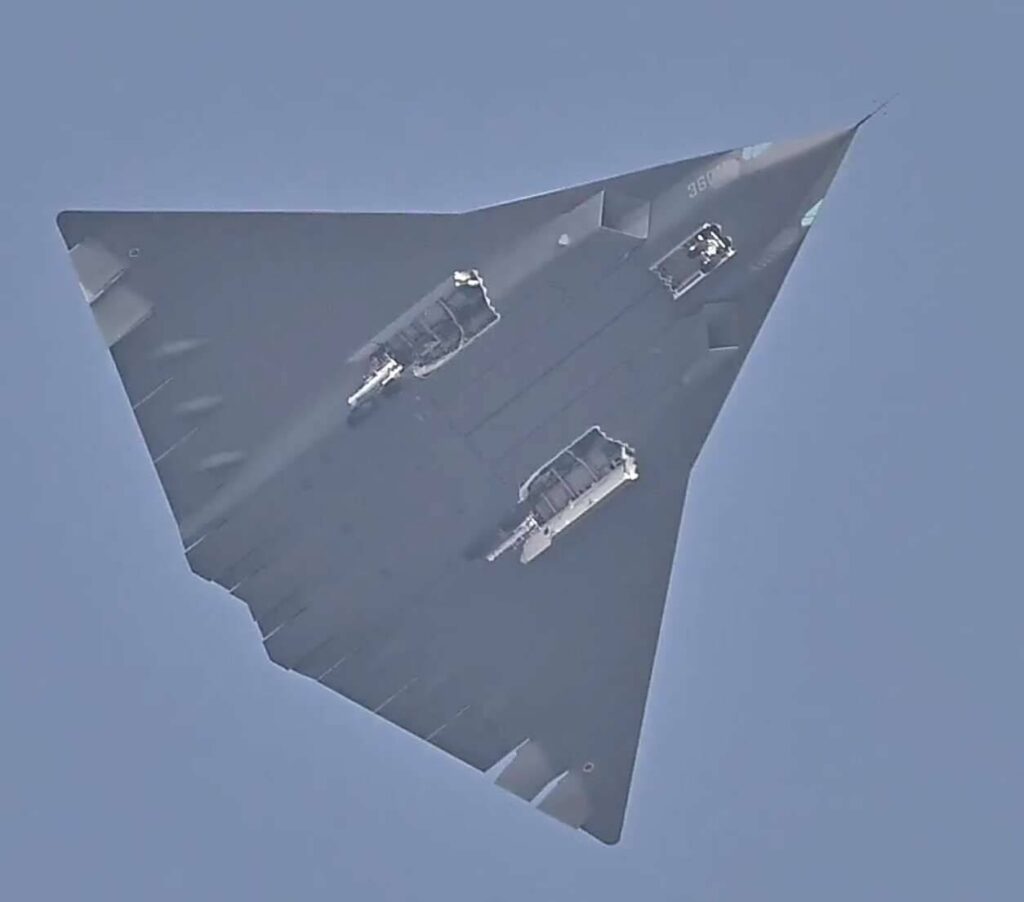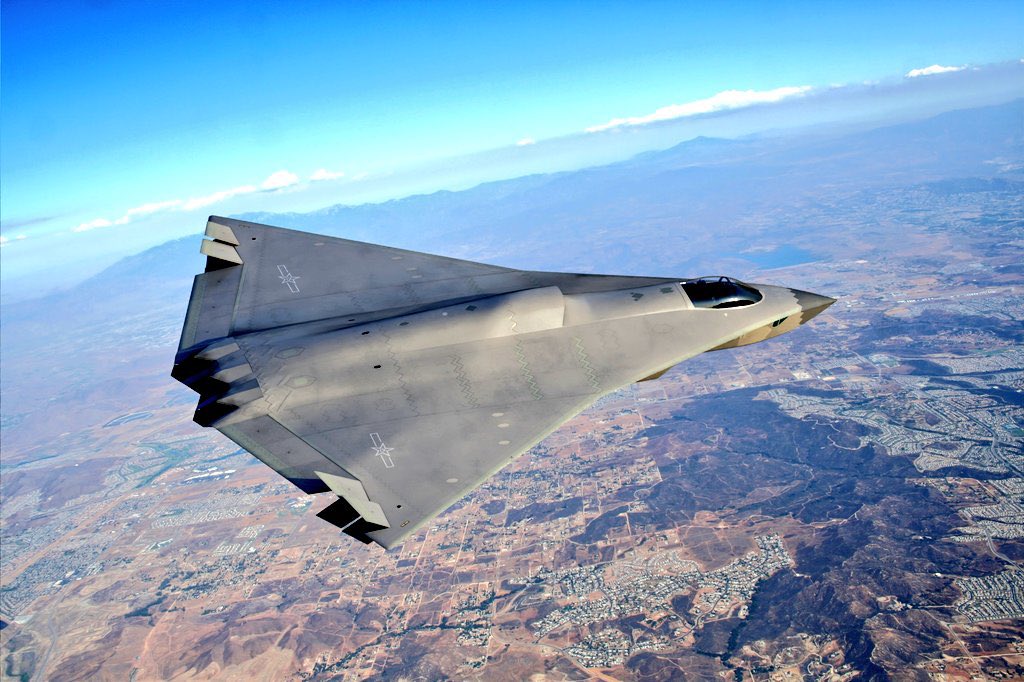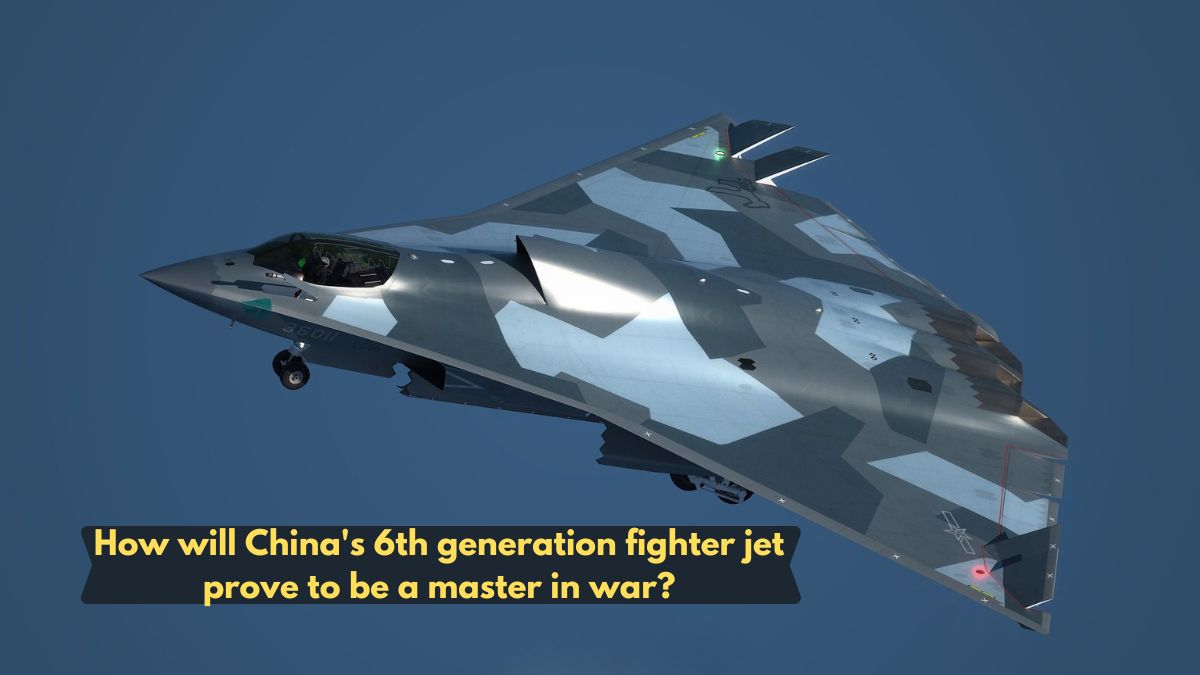Recently, China unveiled its latest 6th generation fighter jet, the J-36, which has garnered significant attention for its advanced design and features. This aircraft has drawn the attention of military experts worldwide due to its technological capabilities and unique characteristics. Let’s dive into the key features of this new fighter jet.
Technology used in J-36: engine, structure, payload, avionics, speed and stealth capability
Design and Structure
The J-36 features a unique and advanced design, incorporating a trijet (three engines) and a tailless double-delta wing configuration. This design enhances the stealth (radar-resistant) capability of the aircraft, as well as its aerodynamic efficiency. The aircraft’s large fuselage indicates that it has ample space for fuel and weapon storage, making it capable of carrying heavy payloads while maintaining stealth.
Engine and Power
The J-36 is powered by three engines, two of which are positioned beneath the main wings and one is located above the fuselage. This trijet configuration provides the aircraft with a high thrust-to-weight ratio, enabling it to carry heavy payloads and undertake long-distance flights. This engine arrangement also gives the J-36 superior power and range compared to previous generation fighters.

Weapons and Payload Capacity
The J-36 is designed to carry a substantial payload of internal weapons while maintaining its stealth capabilities. The aircraft is capable of carrying air-to-air missiles, air-to-ground missiles, and bombs, which makes it a versatile combat aircraft capable of engaging a wide range of targets in various combat scenarios.
Avionics and Radar
The J-36 is equipped with cutting-edge avionics and radar systems that provide advanced sensor fusion, automated target identification, and the ability to operate in a network-centric combat environment. The aircraft has the capability to coordinate with unmanned aerial vehicles (UCAVs), integrating it seamlessly into a networked warfare system. This feature allows for better situational awareness and efficient operations during complex operations.
Speed and Stealth Technology
Thanks to its stealth design and advanced engine technology, the J-36 is capable of high speeds and long-range flight. The tailless and double-delta wing configuration reduces its radar signature, making it less detectable by enemy radar systems. This design allows the aircraft to operate more effectively in hostile airspace, avoiding detection and successfully engaging targets.

The J-36 marks a significant leap in China’s aerial capabilities, showcasing its advanced technical features and potential to shift global military power dynamics. While detailed information about the jet is still limited, its design and capabilities suggest that the J-36 will play a crucial role in the future of aerial combat. With its superior stealth, power, and versatility, this aircraft could redefine the way future aerial warfare is fought.
Haryana Update: हरियाणा में शुरू हुई रिमझिम बारिश, 12 जनवरी से घना कोहरा और तापमान में होगी गिरावट
